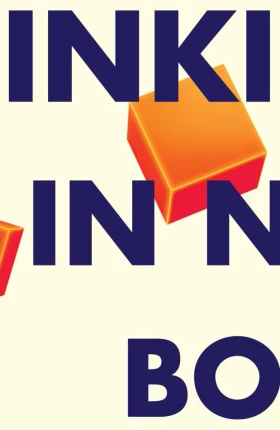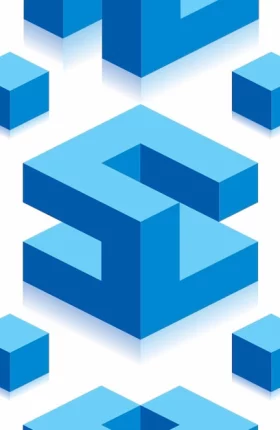The ability to survive in a world of accelerating change and challenge calls for ever greater creativity in our thinking. But to become more creative, we need to understand how our minds work. Once we do, we will recognize that we must do more than simply “think outside the box,” as the traditional business manuals suggest. We need to “think in new boxes.” In this way, business leaders can marshal their companies’ creativity and give them a real competitive advantage.
We Cannot Think Without Models
We constantly simplify things in order to make sense of the world around us. Take three examples:
- How many colors are there in a rainbow? You will probably say seven. But why seven, when there are actually thousands? The fact is that thousands is not a manageable figure—so we are forced to simplify, and seven is what we have been taught.
- How many columns are at the front of the Parthenon? You are probably hesitating and might say anywhere from five to ten. Actually, there are eight. But to have an image of the Parthenon in your mind’s eye requires only that you have a general grasp of the details.
- How many grains of sand does it take to make a pile? More than a few, obviously. But there is no exact answer because a pile is, by definition, an approximation: we do not need to know the precise number.
In the business world, we also simplify. Take three more examples: market segments are conceptual categories and do not add up to the same thing as the market itself; balance sheets are models based on rules relating to currency and accounting, and they do not represent financial reality; and Maslow’s hierarchy of needs, devised by the behavioral scientist Abraham Maslow, is an abstract rendering of human nature rather than a precise profile of your customer.
These six examples demonstrate that the human mind needs to invent models and concepts and frameworks as stepping stones on the road to interpreting reality. They are not precise representations of reality—they are working hypotheses. They allow us to think and then work. They help us to “freeze” part of reality in order to make things manageable.
The Art of Thinking in New Boxes (Because Thinking Outside the Box Is Not Enough)
Models and concepts and frameworks are—to use another phrase—mental boxes within which we com-prehend the real world. And ever since the 1960s, we have been taught to be creative by “thinking outside the box."
The trouble is this: once you have mentally stepped outside the box, what happens next? The space outside the box is very expansive—infinitely so—and there can be no guarantee that you will find a solution to your problem. So the answer is that you need to find a new box. And you must consciously build or choose that box yourself; if you do not, an unconscious process will do it for you.
The way we think means that we cannot be creative in a constructive way without inventing models or boxes. Ideally, you need to develop a number of new boxes—new models, new scenarios, new ways of approaching a problem—to structure your thinking. The challenge—and the real art of creativity—is to know how to build those new boxes and, in the process, provide the framework for fresh imaginative effort.
Half a century ago, Bic, a French stationery company, brought to market the idea of making low-cost pens. Some creative brainstorming produced a series of variations on the theme: two colors, three colors, gold trim, advertising logos, erasers, and so forth. But who would have thought of making a razor? Or a lighter? Bic could come up with those ideas only by adopting a radical change of perspective. Instead of viewing itself simply as a pen company, Bic started to think of itself as a disposable-objects company—that is, as a mass producer of inexpensive plastic implements. In making this transition, Bic had, in effect, created a new box.
Business offers a number of other examples.
- Apple, originally a manufacturer of popular personal computers, leveraged its expertise to expand into the multimedia business. Initially, there was no logical reason for it to contemplate taking on Sony and its ubiquitous Walkman. But once Apple had created a new box and viewed itself through a different lens—specifically, as a multimedia company that knows circuits and bytes—the notion of developing a digital “walkman” became obvious.
- Google’s original aspiration was to build the best search engine ever. Arguably, the company eventually achieved that. But for Google to enter a new era of growth, it needed to perceive itself differently. The creation of a new “we want to know everything” box sparked projects such as Google Earth, Google Book Search, and Google Labs, as well as further improvements to the company’s search engine.
- Philips, a high-tech company, had concentrated its efforts on product-oriented ventures ranging from semiconductors to domestic appliances. Then it started to shift its strategic emphasis and endeavored to identify and exploit global trends in health care and consumer markets. In doing so, it has become a world leader in several new categories, including home health-care systems. By thinking in a new box, Philips has used its core skills in different ways—and has fundamentally changed its business as a result.
- Michelin and IBM illustrate how some companies have successfully moved from a product or technology orientation to a solutions or results orientation—without necessarily abandoning their core products or technologies. Michelin, the tire manufacturer, is now a road safety specialist, while IBM, the computer giant, has entered the consulting business.
How to Create New Boxes
If the theory makes sense, how does it work in practice? Here is one example. Like many companies, Champagne De Castellane, a French champagne manufacturer, was committed to growing its sales. To develop ways of achieving this goal, it held workshops on three days over a two-week period. Senior executives were asked to build a new box that would foster some innovative business ideas.
To start with, the executives were asked to think about their business without mentioning the words they most often used to describe it—for instance, liquor, drink, champagne, alcohol, bottle, and so on. As a result of this exercise, the team came to the conclusion that the company’s business was fundamentally about contributing to the success of parties and celebrations.
Once that insight had emerged—and a new box had been formed—the executives had a framework within which they could think about the company and its future. Many ideas flowed—a number of which enabled Champagne De Castellane to become more appealing to consumers and to grow sales. For instance:
In the summer, champagne is often not cold enough, especially if it is brought to a party as a gift. The company found that it could solve the problem by making a plastic bag that was sturdy enough to carry not only the bottle but also a few pounds of ice.
At many parties and celebrations, someone is called on to give a speech. The company determined that it could put together a self-help booklet titled “How to Write a Speech” and attach it to the bottle.
Parties thrive on games and entertainment. The company resolved to modify the wooden crates that contain its champagne bottles so that they could be recycled as game boards for chess, checkers, and backgammon.
It is worth noting that during the three-day brainstorming process, about 80 percent of the executives’ energy was devoted to the identification of a new box (the party). Once that was done, the ideas came relatively easily. Indeed, coming up with the right new box is always the tough part, regardless of whether the underlying challenge is scenario planning, business development, or the design of a new strategic vision. So it is critical that companies understand this—and adopt a process that allows them to create the new box.
The brain is like a two-stroke engine. We are well aware of the value of the second stroke, when the brain selects, compares, sorts, plans, and decides. But the first stroke—when the brain imagines, dreams, suggests, and opens horizons—is the one that really matters. This process, however, needs organization—hence the need for a new box. And in times of crisis, when companies everywhere are concerned about their future, the importance of being able to think in new boxes is greater than ever.





